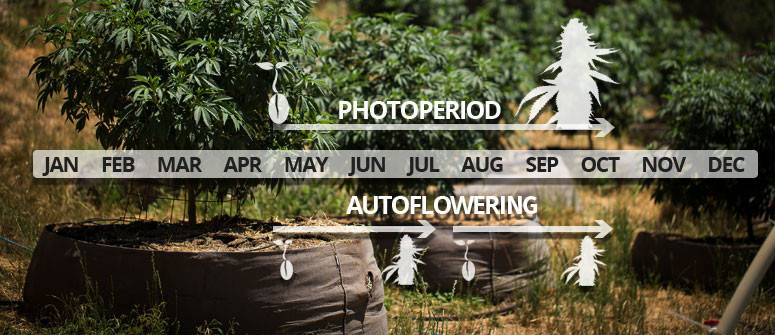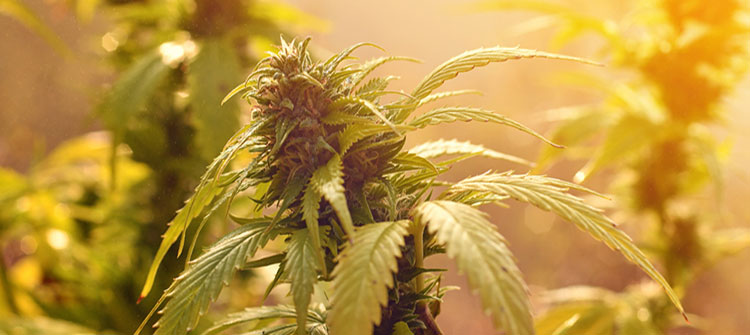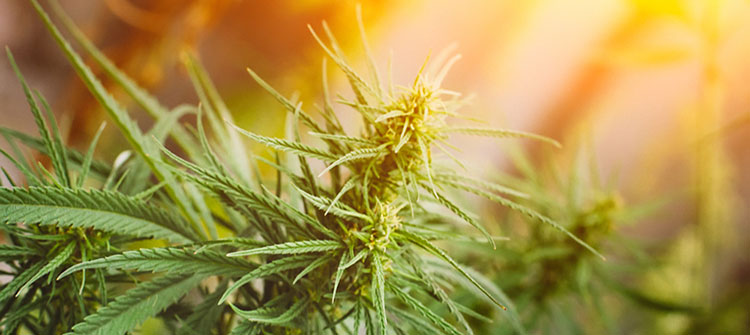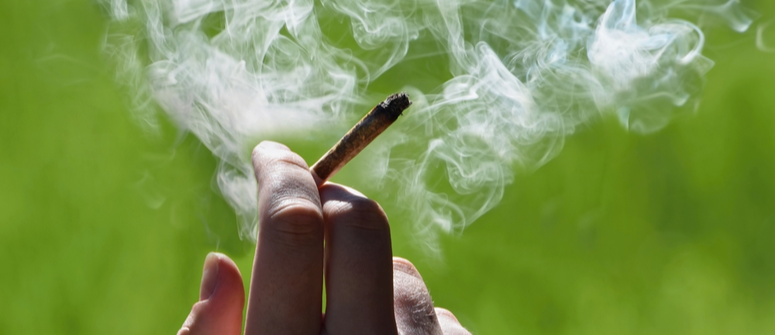The difference between photoperiod and autoflowering cannabis

When planning out your cannabis growing season, one of the first questions you'll have to consider is whether you want to grow photoperiod or autoflowering plants. You can get some great buds with either if you treat them right, but doing so means you have to know the difference between their lighting needs, yields, appearance, size, and more.
Contents:
As you look around your empty growing space, you may start to wonder whether you should raise photoperiod or autoflowering cannabis plants during the upcoming season.
You can get some amazing weed from either kind of plant, but knowing the differences between the two is key to ensuring a successful harvest. So, in this article, we’ll be breaking down what exactly photoperiod and autoflowering strains are, and what they have to offer. We’ll explore key differences between the two as we go along, and hopefully can help you determine which type is best for you.
What Are Photoperiod Cannabis Strains?
Photoperiod cannabis plants are the source of most of the weed available on the legal (and illegal) market, and their buds are most likely what you enjoy if you use cannabis.
What are these plants, though? To be specific, photoperiod cannabis strains are the kind that switch from the vegetative stage to the flowering stage when their exposure to light dwindles. For plants growing outdoors, this means they will start to flower in the late summer and be ready to harvest by September or October. Indoors, it’s the grower’s responsibility to reduce the light cycle to 12 hours on and 12 hours off to simulate the changing of the seasons.
This system of growth is the source of the photoperiod plant’s name, with the prefix “photo” referring to light, and the suffix “period” referring to a certain span of time.

Growing Photoperiod Cannabis Strains
Given the fact that these are the most common strains, we have a very good idea of how photoperiod cannabis grows. Plants in this category can be quite different from each other, but they share some key traits in common.
Appearance
To start, photoperiod weed plants tend to be the taller and wider of the two types. This is largely because they have a longer vegetative period than autoflowers, which means they can gain some serious height and mass in the process.
Difficulty
From seed to harvest, photoperiod strains will take longer than autoflowering strains to grow, which makes timing essential for outdoor growers. If you live in a climate that is less than perfect for growing cannabis, planting at the right time is vital to ensure your crop doesn't get killed off by an early frost or similar environmental factor.
Despite the simplicity of autoflowering strains, it is photoperiod strains that can take more abuse, whether that be intentional or the result of mistakes made as a beginner. Their growing stages can be controlled by the amount of light they receive, so, if during the vegetative stage you run into any deficiencies or problems, flowering can be delayed.
Yields
Photoperiod strains are easy to manipulate, which is both a positive and negative trait. If we assume the manipulation is intended, photoperiod strains can grow taller and produce bigger yields than their autoflowering counterparts.
As we've alluded to, it is also possible to keep a photoperiod plant in a vegetative state until you are sure it has the strength and structure to support efficient bud production. Photoperiod strains can be cloned, too, producing a nearly endless supply of marijuana plants. If you’ve found a photoperiod plant with strong resilience and plentiful bud production, the option to replicate those attributes can all but guarantee success time and time again.
If you allow a weakened marijuana plant to flower, however, there is a good chance yields will be smaller. The potency of the buds will be affected too, leading to an inferior product all around.
Smoking Photoperiod Cannabis Strains
Aside from the growing traits, what does a photoperiod cannabis strain offer the end user?
As it is more responsive to light cycles in optimal conditions, a higher standard of bud can be produced. Most of the time, both bud production and potency in a well-grown photoperiod strain will be more impressive than with autoflowering cultivars.
Furthermore, the flavour of these plants is usually more well-developed. THC content can reach higher levels, as can the density of terpenes present. These days, however, breeders are coming up with seriously potent and high-yielding autoflowering strains, so keep that in mind.
What Are Autoflowering Cannabis Strains?
While you can find them in dispensaries, coffeeshops, and cannabis clubs around the world, autoflowering strains are mainly popular amongst home growers.
Unlike photoperiod varieties, autoflowering strains are not dependent on the duration of light hours they receive. They start to flower automatically when they're a few weeks old, specifically around 2–4 weeks. This is the main difference between photoperiod and autoflowering strains in a nutshell.

Growing Autoflowering Cannabis Strains
Considering their rapid growth rate and different relationship to light, a slightly different approach is needed to raise autoflowering plants. Certain aspects of the process are relatively easier, while others may present new difficulties.
Appearance
As they spend such a brief period in vegetative growth, autoflowering strains tend to be a lot shorter than their photoperiod counterparts. Few will get much taller than a metre, and many end up even shorter than that. While this can be seen as a disadvantage, you may find that shorter plants are far easier to deal with, especially if you lack growing experience or space.
Moreover, the short stature of autos can be a good thing for discreet indoor growers or outdoor guerrilla growers looking to harvest quality buds from low-key plants.
Difficulty
An autoflowering plant does just that, flower regardless of the light cycle it is subjected to. Be sure to pick a strain that has a vegetative period that fits within your own time frame, as this process will take place regardless of when you’re ready.
Autos offer less control over growth, but, for novices, it takes away the complication of modifying light cycles.
Autos typically have a much quicker total crop time from seed to harvest. That's not to say some photoperiod strains cannot be harvested within a shorter time frame, but autoflowering strains provide ready access to yields in as little as eight weeks.
Yields
Considering how quickly and easily autoflowering plants can pop up, you’d think you’d end up with especially small yields. However, if you treat your plants right, your autoflowering crops can offer you hundreds of grams of quality bud. Sure, you won’t get as much as you would with a photoperiod strain, but yields can be more than impressive relative to their size.
In turn, as the introduction of ruderalis genetics has become more widely experimented with, the efficacy of autoflowering strains has dramatically improved. It is not uncommon to find an autoflowering strain that matches a photoperiod variant in terms of yield and THC content.
These nugs will also often be just as dense as those from photoperiod crops, and should definitely not be underestimated. However, achieving these yields means you’ll have to keep your plants as healthy as can be.
Although they are an ideal choice for growers with limited knowledge or a less than perfect growing area, autoflowering strains are more susceptible to major mistakes due to their rapid life cycle. It isn’t possible to delay the vegetative stage to remedy any stress-related issues or nutrient deficiency.
Then, of course, if your plant flowers in a state of poor health, the buds will come out weaker and smaller than usual.
Smoking Autoflowering Cannabis Strains
Nowadays, your experience smoking autoflowering strains will be much the same as with photoperiod strains. Autoflowering strains of old were infamous for producing inferior yields and weak buds.
Yet, modern equivalents have come a long way, and the THC content and terpene profile should be comparable. Ruderalis genetics themselves aren’t known for being particularly tasty, but they don’t stand out prominently enough to interrupt the aromatic terpenes imparted from other parent strains.

What Is the Difference Between Photoperiod and Autoflowering Strains?
With all this information considered, let’s break down the main differences between photoperiod and autoflowering cannabis strains.
Growing Schedule
As discussed, photoperiod strains move through their life cycle depending on the amount of daylight hours they receive each day. Autoflowering strains, however, will push into and through the flowering stage without any adjustment in daily exposure to light.
Size
Given that they have more time to take in light and nutrients to convert into energy, photoperiod plants will often end up notably larger and wider than their autoflowering counterparts. This disparity in size is also due to ruderalis plants being the shortest cannabis variety out there.
Yields
Being fairly tied to the size factor, it’s also sensible to assume that photoperiod strains end up with higher yields on average than autoflowering strains. However, the difference isn’t always as major as you’d expect, as many autoflowers are able to provide yields on par with photoperiod varieties.
Difficulties of Growing
Lastly, growing either kind of plant comes with unique difficulties.
Photoperiod weed plants are more high-maintenance in general, requiring you to control and monitor a variety of factors. However, this also means you can manipulate your plant to keep it in the vegetative stage, which will allow you to fix any errors before your buds start to grow.
Autoflowering plants, while easy to maintain in general, do not allow you much control over the process, so mistakes you make along the way will translate to your final yield. Nothing but time is needed for the vegetation to flowering transition, so you can't take advantage of the stage like you otherwise could.
Pick the One That Best Suits Your Needs
So, is one type of plant truly better than the other?
The decision to go with photoperiod or autoflowering seeds for your next grow will come down to the type of growing environment you can provide, and your personal preference. If your setup is able to accommodate adjustable light cycles, plenty of room to stretch, and careful monitoring, then a photoperiod plant will almost always produce bigger yields and more potent buds.
If you are more restricted as to where and when you can grow, autoflowering strains make a great alternative. If you look hard enough, you can even find some strains that perform just as well or better than their photoperiod competition. Don’t forget, though, that they’ll still need the same care and attention as any other cannabis plant.
As long as you do your research, both types will reward you with dank buds when all is said and done.
.jpg)
.jpg)

.jpg)
